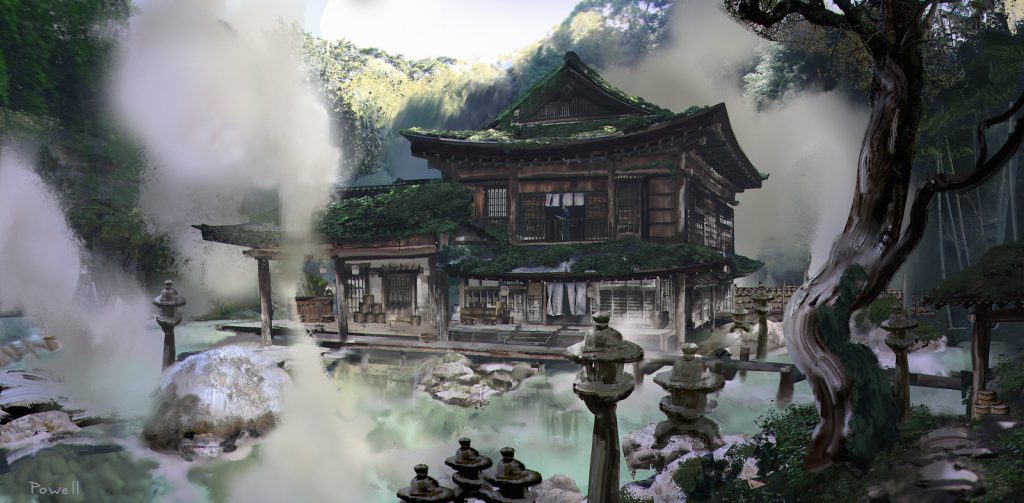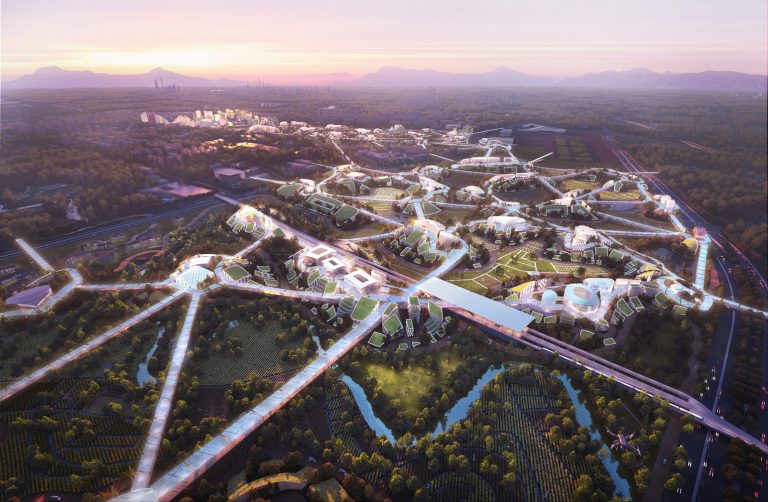
Professionals in the ever-changing field of architecture and urban design are constantly looking for fresh sources of inspiration and novel ways to enhance their talents. While conventional creative outlets such as books, films, and site visits have long been staples, a new route has emerged: the world of video games. Games provide a unique platform for architects and urban designers to explore virtual settings, learn spatial design, and obtain new views. In this article, we’ll look at three intriguing games—Ghost of Tsushima, Civilization 6, and Spider-Man 2018—and see how they may spark creativity, influence creative thinking, and capture these experts’ imaginations.
Before we get into the specific games, consider why games are becoming increasingly relevant for architects and urban designers. Games provide a platform that allows for active engagement rather than passive observation. They provide a variety of advantages that might improve design abilities and widen viewpoints.

Immersion in virtual worlds and exploration of highly created locations is made possible by games for architects and urban planners. The freedom to wander and interact with these digital settings allows for an unprecedented degree of involvement, allowing experts to study the complexities of architectural and urban design firsthand.
By exploring virtual urban communities, towns, and scenes, draftsmen and metropolitan planners can examine the format, synthesis, and usefulness of spaces. Games frequently utilize sensible building components and metropolitan arranging ideas, offering a chance to take apart and figure out spatial plans dynamically and intuitively.
Many games, like the ones we’ll look at today, involve obstacles that need strategic thinking, problem-solving, and decision-making. These cognitive abilities are essential for architects and urban designers, who must solve complicated design challenges in real-world circumstances. Games give a venue for these talents to be honed while participating in deep and interesting gaming.
Now, let’s look at three excellent games that architects and urban designers might try playing in order to improve their professional practice.
Ghost of Tsushima: Rediscovering Feudal Japan’s Architectural Marvels

Sucker Punch Productions’ Ghost of Tsushima transports players to medieval Japan during the Mongol invasion of Tsushima Island. As the protagonist, players must travel to a meticulously designed open world that highlights ancient Japan’s architectural wonders and cultural diversity.
Ghost of Tsushima shines in its depiction of traditional Japanese architecture. The game takes place in a visually magnificent countryside replete with pagodas, temples, shrines, and realistic town settings. These spaces can be explored by architects and urban designers to gain a better knowledge of the materials, building processes, and spatial design ideas used in traditional Japanese architecture.
The Lead Concept Artist at Sucker Punch, Ian Jun Wei Chiew, explains the architectural choices in the game. While designing the game, they couldn’t find available and detailed references from the Kamakura era, which made their job harder. However, they got help from Cultural Experts. At the end of this research, they used Yayoi Architecture for the Toyotama region of the game, which was unique and can hardly be seen in other media formats.

Yayoi architecture is the architectural style that evolved in ancient Japan during the Yayoi period (300 BCE – 300 CE). It has tateana-jukyo pit homes, which were dug and covered with thatched roofs. Kamekan, or elevated granaries, were also prevalent. Yayoi architecture was straightforward and efficient, reflecting the necessities of a farming community. Despite the scarcity of written documents, archaeological discoveries shed light on the layout and building practices of the time.)
Creating engaging cities in video games entails developing a set of laws and filling them with fascinating concepts into the process of creating villages like Akashima, which has a soothing and mystical aura. Designers produced a distinct and distinctive aesthetic by brainstorming, studying traditional Japanese remedies, and adding visual elements such as white statues, paper-plastered walls, and misty surroundings. These painstakingly created villages take gamers to vivid and intriguing landscapes where every detail adds to the overall experience.

This achieves that goal without mentioning, that designers also studied Mongolian architecture. Since the role of the Mongolians as occupiers, they used primarily traditional “Yurts”, props, and set dressing as a sign of occupation and destruction.
The camera perspective is another crucial aspect that you may learn from this game. We have to take killer renderings as designers. You will see many amazing photos, wonderful compositions with nature, and gorgeous color utilization while playing this game. It will begin to strengthen your vision, and whether you like it or not, you will most likely end up striving to get renderings similar to those in this game. You may train your eyes to enhance your representations.
Civilization 6: A Global Canvas for Urban Design Visionaries

Civilization 6 is a turn-based strategy game developed by Firaxis Games that allows players to design and administer their own civilizations. Aspiring urban planners can play this game to learn about the intricacies and problems of creating and maintaining flourishing cities.
Civilization 6 simulates city construction and urban growth in great detail. Players must make critical decisions about infrastructure, housing, transportation, and city layouts. Architects and urban designers may benefit from the game’s dynamics by investigating the influence of these decisions on the growth, efficiency, and livability of virtual cities.
The game takes place throughout several ages and civilizations, each with its own architectural styles and urban planning traditions. Civ 6 incorporates elements of city planning, resource management, and cultural development, which can provide players with a basic understanding of urban growth and strategic decision-making. Architects and urban designers can examine how architecture and urban design evolved in response to cultural, social, and technical developments from ancient civilizations to modern cultures. This historical backdrop might help them better comprehend urban growth and inspire new design concepts.

Another significant skill you may learn through Civ6 is critical thinking and problem-solving, which is highly vital for us. The rich globe map in Civilization 6 allows players to comprehend and evaluate geographical characteristics, trade routes, and the influence of geography on civilizations which you have to take into consideration the geographical properties of your land while you design your civilization. Strategic decision-making, resource management, and long-term planning are all required in the game, which fosters critical thinking and analytical reasoning.
Many instructors and schools have recognized Civilization 6’s instructional significance and have included it in their curriculum. It may be used to educate geography, history, diplomacy, resource management, critical thinking, and problem-solving abilities, among other things. Students can obtain a better knowledge of historical events, cultural trends, and the challenges of controlling a community by playing the game.
Spider-Man: Soaring Through the Urban Landscape

Insomniac Games’ Spider-Man 2018 delivers a thrilling superhero experience set in a recreated recreation of New York City. While not directly about architecture or urban planning, this game offers a viewpoint on the urban environment and architectural landmarks. Shortly you can look at what is on the top of the Guggenheim Museum without buying a ticket to NYC.
The emphasis on verticality and urban connectedness in Spider-Man is appreciated by architects and urban designers. Players swing between buildings, cross roofs, and navigate city streets, gaining new perspectives on the metropolis.
The prominent sights of New York City serve as a backdrop for Spider-Man’s exploits. From the Empire State Building’s soaring spire to the majesty of Central Park, these sites demonstrate a combination of architectural wonders and metropolitan identity. You can view many Landmarks of NYC easily and from a very different perspective. Here are some of the places you can visit.


For example, One World Trade Center, known as Freedom Tower as well, is an iconic building in New York City. However, in Spiderman-2018, One World Trade Center is a bit different. The Freedom Tower in the game is actually Libeskind’s original design for it. Insomniac Games wanted to cherish and honor the first design by Libeskind, which is also named Ground Zero Master Plan.
Many more landmarks and architectural structures can be visited in Spider-man 2018, Madison Square, and the UN Building as well. Not just structures but also famous public areas like Times Square, Central Park, and many more.
Video games are a source of creative ideas. Games engage the imagination and push the frontiers of design thought, from spectacular aesthetics to inventive tales. Architects and urban designers might gain inspiration for their own work from the creative choices, architectural styles, and urban planning concepts exhibited in these virtual environments.







































